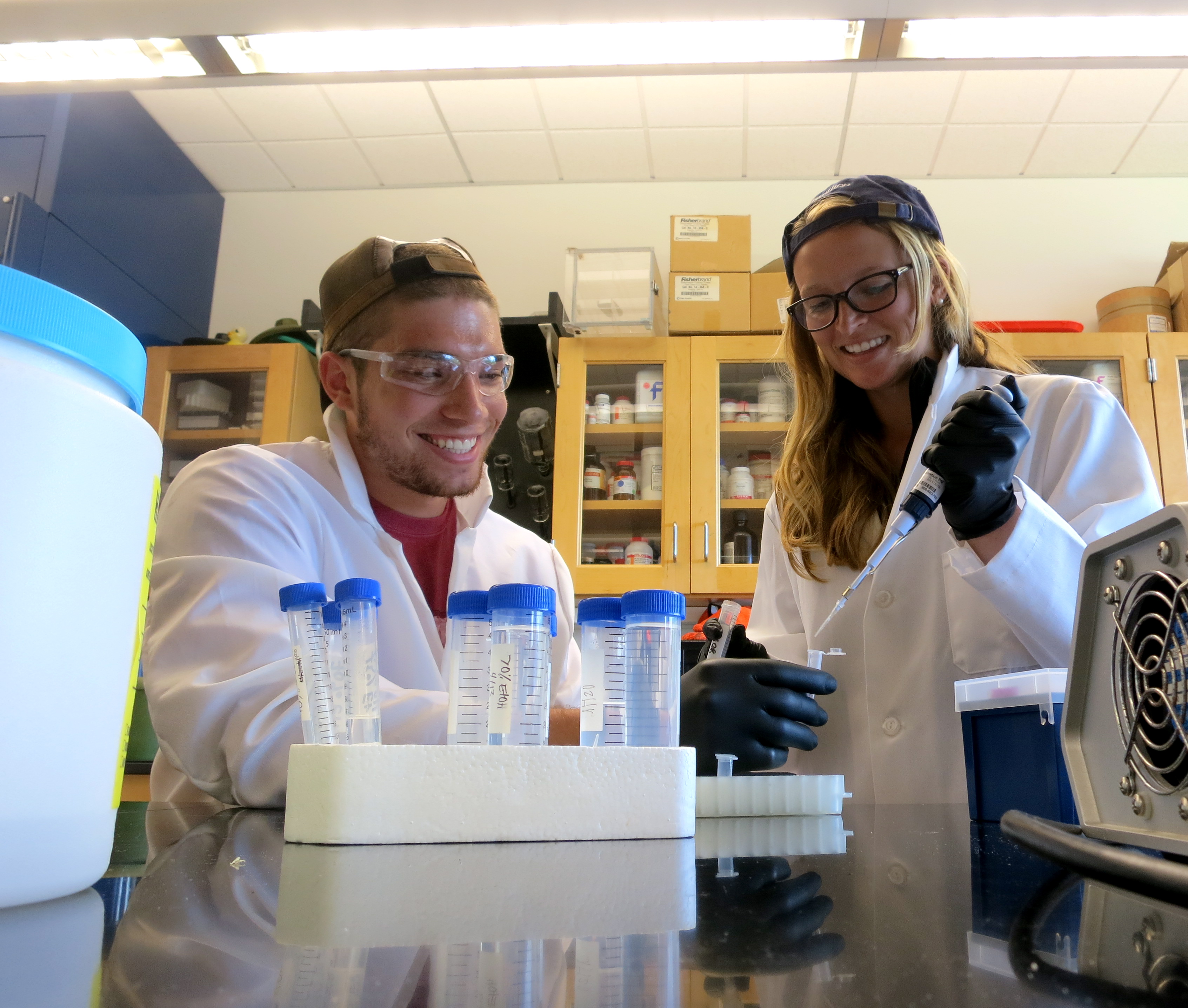
It might sound surprising, but studying two neurotransmitters found in drosophila, a genus of small flies, may help us better understand human brain chemistry. While most people may not regularly think about neurotransmitters in our brains, these chemicals are the stimuli behind our frustrations when stuck in traffic or our elevated stress levels when facing a seemingly never-ending pile of assignments.
Ashley Perritt ’14 and Niko Wagner ’14 are studying tyramine beta hydroxylase (TBh) and TBh-Related (TBhR) neurotransmitter genes in drosophila to better understand their functions. Little is known about TBhR, but scientists do know that it is structurally similar to TBh, which converts tyramine to octopamine in a complex series of chemical reactions. Octopamine is often present in invertebrate brains and can also replace norepinephrine, the neurotransmitter responsible for increasing heart rates during stressful situations in vertebrates.
Working with Professor of Biology Herman Lehman, the team first created a stable collection of drosophila cells. They then inserted genetic plasmids carrying the TBh and TBhR genes into these cells in a relatively simple lab procedure. These plasmids are man-made units of DNA that can replicate within a host cell.
In the next step, drosophila cells, now containing the plasmids with their gene of interest, replicate on an agar gel plate in a process known as polymerase chain reaction (PCR), a basic form of genetic cloning. Once they have a large collection of cells that contain TBh and TBhR, the team removed the plasmids and preserved the genes in a crystalline matrix to study their physical structure.
Wagner explained the “bigger picture,” of the project and said, “We’re trying to express this unknown protein [TBhR] and assess its enzymatic activity.” The team can induce TBH and TBhR gene expression with copper sulfate, meaning they can compare characteristics between cells that do or do not express the gene.
Agne Jakubauskaite ’13 worked with this material in the summer of 2011 and continued the work for her senior thesis. She designed the plasmids that the team is now trying to incorporate into drosophila cells.
The team analyzed Jakubauskaite’s plasmids to ensure that all the components were inserted in the correct order. Similar to how many languages read from left to right, DNA sequences must be oriented in specific direction. If one cutting site or other essential plasmid segment were incorrectly inserted, the DNA reading mechanisms would not properly recognize the sequence, leading to improper gene expression. The current team must identify any errors and correct them before proceeding with the experiment.
Perritt and Wagner will also continue this research for their senior theses. This summer, the goal was to obtain and purify many copies of TBH and TBhR, their genes of interest. These purified genes will give them an adequate amount of material to analyze, and their findings will direct them toward new material to research during the year.
“If we can figure out the enzymatic functions of these genes, it will give us a better understanding about neurotransmitters and how they work,” said Perritt. Our brains use a complex system of chemicals to operate, and Perritt added, “recognizing a component’s function could lead to substantial improvements in how we understand our cellular communications.”
Perritt is a graduate of the Lawrenceville School (N.J.) and Wagner is a graduate of Marcellus High School (N.Y.).
Posted August 8, 2013
